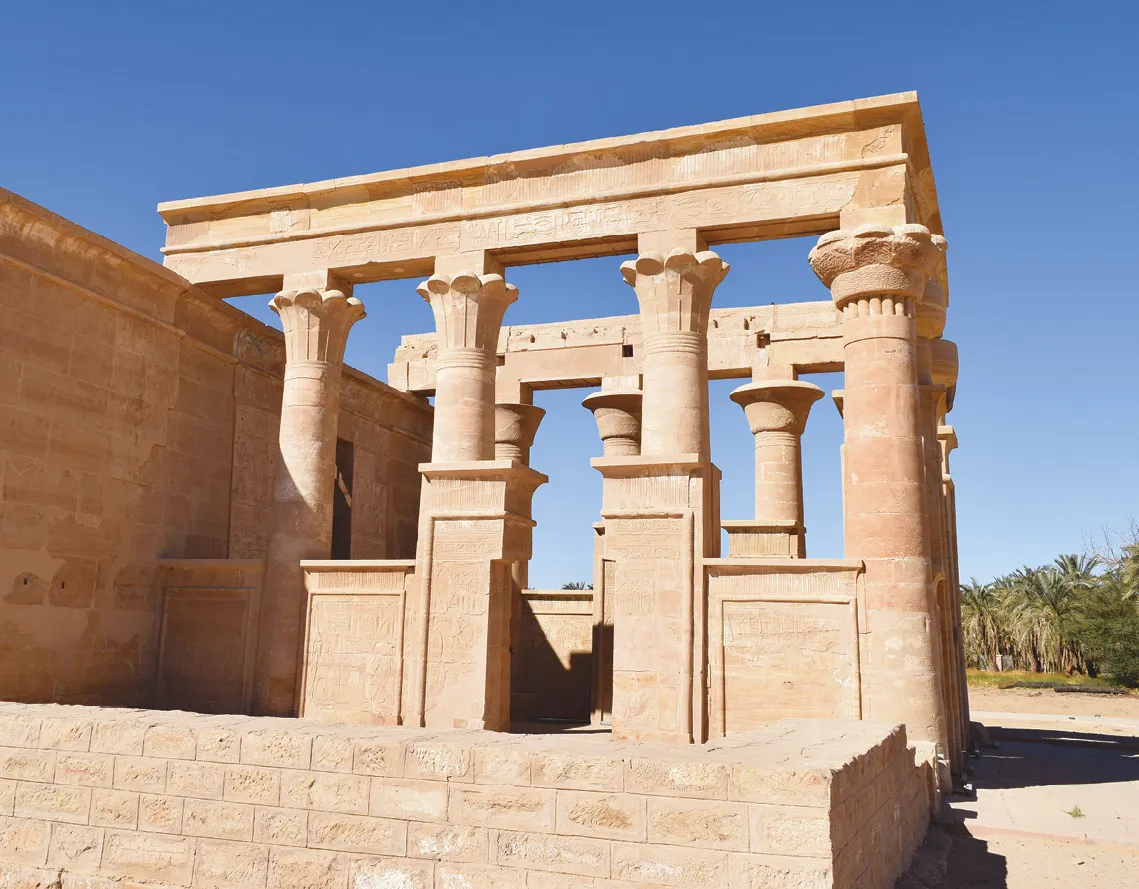Egypt is synonymous with grand monuments, awe-inspiring structures, and the timeless wonders of the ancient world. Its most iconic and fascinating treasures are the ancient temples built to honor gods, pharaohs and the life-giving Nile River. These temples indicate the ancient Egyptians’ remarkable architectural prowess and religious devotion. From the soaring pillars to intricately carved hieroglyphics, these temples were the centerpieces of spiritual life in Egypt for centuries.
Table of Contents
Toggle1. Karnak Temple
Location: Luxor, Egypt
Era: Middle Kingdom to Ptolemaic Period
Dedicated to Amun-Ra, Mut, and Khonsu
The Karnak Temple is not just one but a vast complex that served as the most important religious site in ancient Egypt. The temple complex is dedicated primarily to the god Amun-Ra but also includes temples for his wife, Mut, and son, Khonsu. Construction began during the Middle Kingdom, but subsequent pharaohs, including Ramses II, added to its grandeur over centuries.
The Hypostyle Hall has 134 massive columns and is one of the temple’s most awe-inspiring features. Each column is intricately adorned with carvings of pharaohs and gods, transporting visitors to an era of divine kingship. The Sacred Lake, obelisks, and towering pylons make Karnak one of the most visited temples in Egypt and one of the most impressive in the ancient world.
Why Visit?
Karnak is unmatched in size and significance, offering a captivating experience of ancient Egyptian religious life. The evening sound and light show brings the temple to life, illuminating its history and architectural splendor.
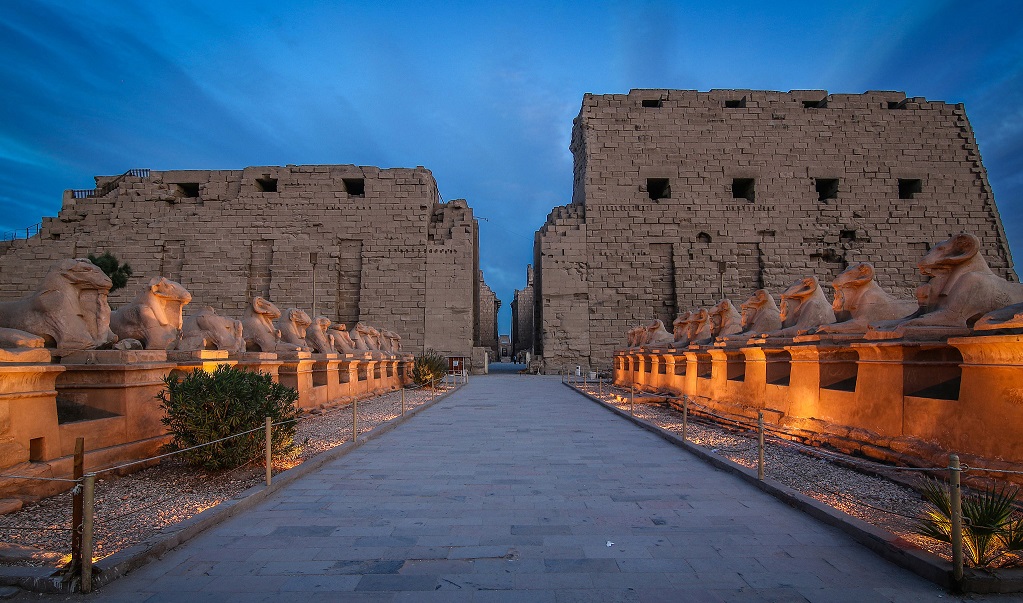
2. Temple of Luxor
Location: Luxor, Egypt
Era: New Kingdom (1400 BCE)
Dedicated to Amun-Ra, Mut, and Khonsu
Situated along the Nile River and connected to Karnak Temple by the Avenue of Sphinxes, the Temple of Luxor is a magnificent display of New Kingdom architecture. Constructed in the reign of Amenhotep III and later expanded by Ramses II, the temple was a significant center for the festival of Opet, an annual celebration of the divine unity between the pharaoh and the gods.
Visitors are greeted by two massive seated statues of Ramses II at the entrance, flanked by towering obelisks (one of which now stands in Paris). The inner sanctuaries and courtyards showcase scenes from pharaonic life, military campaigns, and religious ceremonies.
Why Visit?
The Temple of Luxor offers an intimate look at royal rituals and religious ceremonies. Its proximity to Karnak makes it a perfect stop on your Luxor temple tour.

3. Abu Simbel Temples
Location: Southern Egypt, near the Sudanese border
Era: New Kingdom (1264–1244 BCE)
Dedicated to Ramses II and the gods Ra-Horakhty, Ptah, and Amun
The Abu Simbel Temples are two massive rock-cut temples carved into the cliffs of southern Egypt. Built by Ramses II, the more significant temple is dedicated to himself and the gods, while the smaller temple honors his beloved wife, Nefertari. The front façade of the Great Temple features four colossal statues of Ramses II, each standing 20 meters tall, symbolizing his divine power.
Perhaps the most remarkable aspect of the Abu Simbel Temples is their relocation in the 1960s. After the Aswan High Dam construction, they were moved to avoid being submerged by the waters of Lake Nasser. This incredible feat of engineering preserved one of Egypt’s most significant historical treasures.
Why Visit?
Abu Simbel’s colossal statues and picturesque location along the Nile make it one of Egypt’s most dramatic and unforgettable temples.
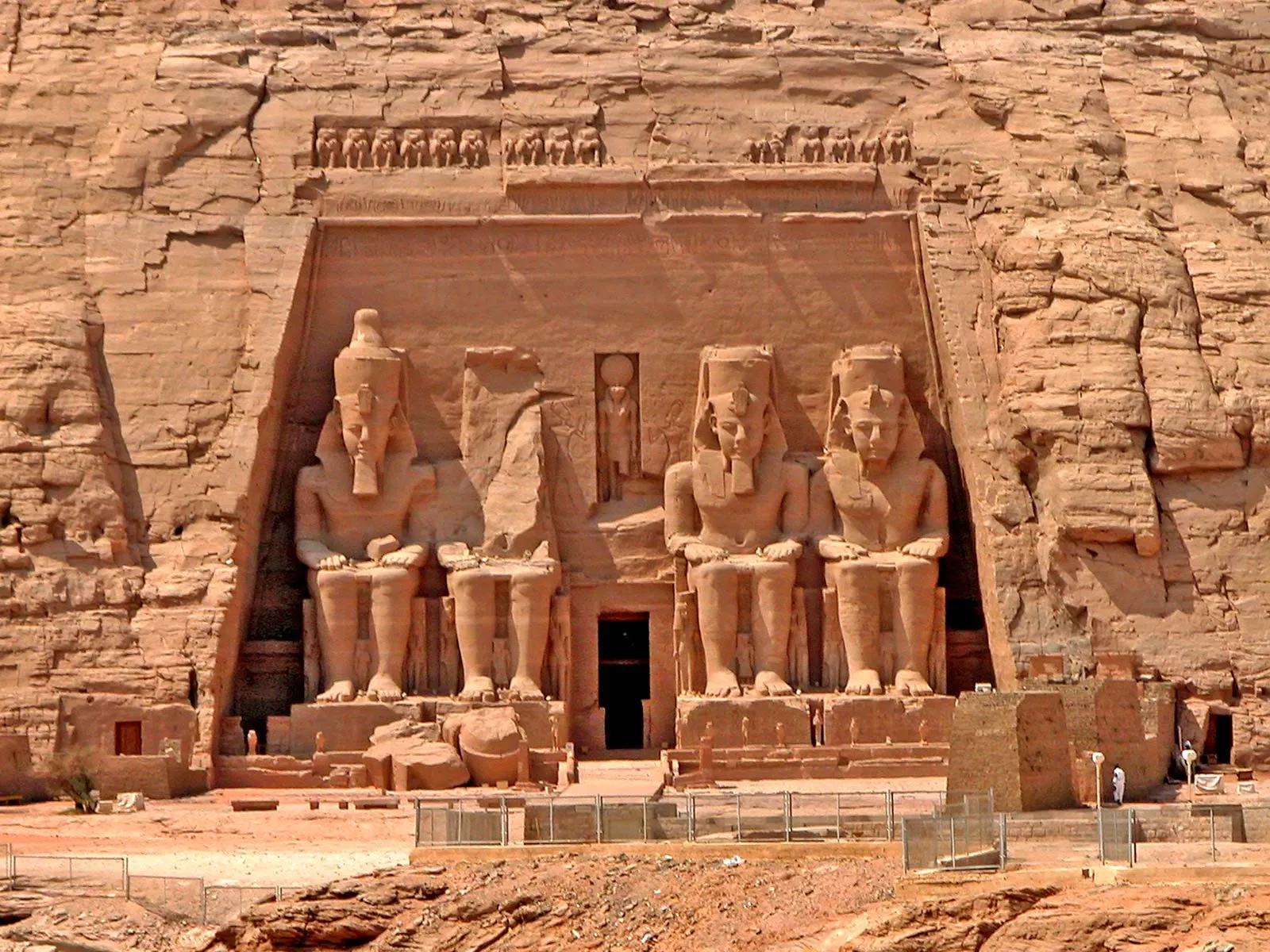
4. Temple of Philae
Location: Agilkia Island, Aswan
Era: Ptolemaic Period
Dedicated to: Isis
The Temple of Philae is one of Egypt’s most serene and beautiful temples. It is placed on an island in the Nile River and is committed to the goddess Isis, one of the most important deities in Egyptian mythology. This temple complex is known for its harmonious architecture, with elegant columns and finely carved reliefs depicting stories of gods and pharaohs.
Like Abu Simbel, the Temple of Philae was also relocated to save it from the rising waters of the Nile due to the construction of the Aswan High Dam. Today, the temple sits on Agilkia Island, which continues to enchant visitors with its peaceful surroundings and connection to ancient myths.
Why Visit?
The Temple of Philae is a must-see for its stunning location and intricate carvings. The nightly sound and light show add a magical atmosphere to your visit.
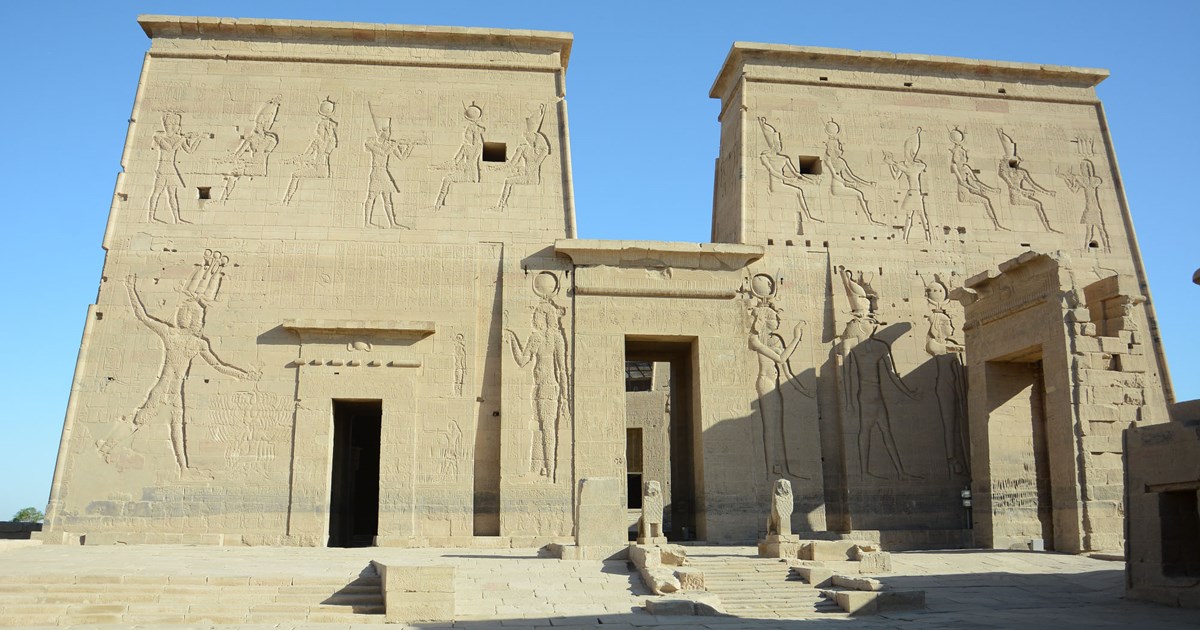
5. Temple of Hatshepsut
Location: Deir el-Bahari, Luxor
Era: New Kingdom (1479–1458 BCE)
Dedicated to Hatshepsut and the god Amun
The Temple of Hatshepsut, also known as Djeser-Djeseru (“Holy of Holies”), is a magnificent mortuary temple dedicated to one of Egypt’s most successful pharaohs, Queen Hatshepsut. The temple is unique for its architectural design, blending seamlessly into the cliffs of Deir el-Bahari. Its terraced structure and colonnaded courtyards are stunning examples of ancient Egyptian innovation.
Hatshepsut ruled as pharaoh and was one of Egypt’s few female rulers. The temple’s walls depict scenes depicting her divine birth, expeditions to the Land of Punt, and other critical moments in her reign.
Why Visit?
The temple’s striking design and historical significance make it a must-visit. It provides an insight into the life and reign of one of ancient Egypt’s most powerful women.
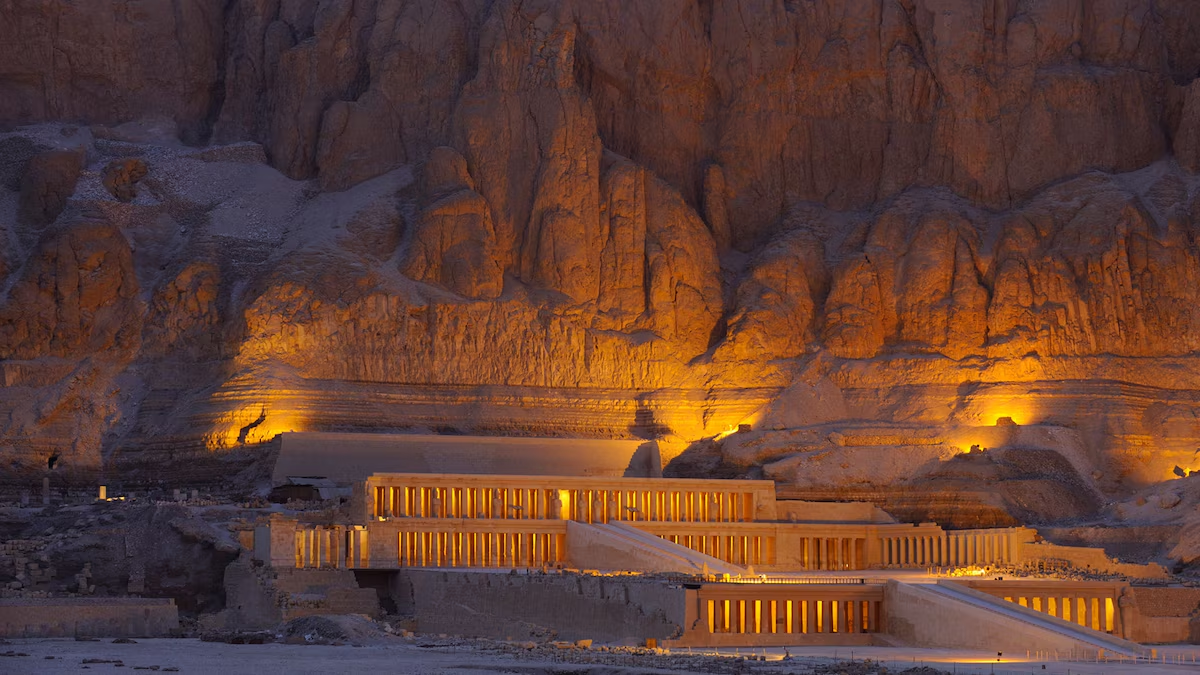
6. Temple of Edfu
Location: Edfu, between Luxor and Aswan
Era: Ptolemaic Period (237–57 BCE)
Dedicated to: Horus
The Temple of Edfu is one of the best temples in Egypt. It is dedicated to Horus, the falcon-headed god of the sky. Built during the Ptolemaic Period, the temple continues ancient Egyptian traditions even under Greek rule. The massive tower at the entrance and the soaring statues of Horus are striking features that make Edfu a memorable site.
The temple walls are filled with hieroglyphic inscriptions, including the famous narrative of the battle between Horus and Seth, providing visitors with a glimpse into ancient Egyptian mythology.
Why Visit?
Edfu Temple offers a well-preserved view of Ptolemaic architecture and is home to some of the finest reliefs in Egypt. It’s a vital stop for anyone interested in the continuity of Egyptian culture.

7. Temple of Kom Ombo
Location: Kom Ombo, near Aswan
Era: Ptolemaic Period
Dedicated to Sobek and Horus
The Temple of Kom Ombo is a dual temple devoted to two deities: Sobek, the crocodile god, and Horus, the falcon-headed god. This duality is reflected in the temple’s design, which features twin entrances, halls, and sanctuaries.
Kom Ombo was an essential center for medicine and healing in ancient Egypt, and visitors can still see remnants of medical instruments carved into the temple walls. The nearby Crocodile Museum showcases mummified crocodiles that were once considered sacred.
Why Visit?
Kom Ombo’s unusual design and association with Sobek make it a fascinating destination. Its riverside location provides beautiful views of the Nile, especially at sunset.
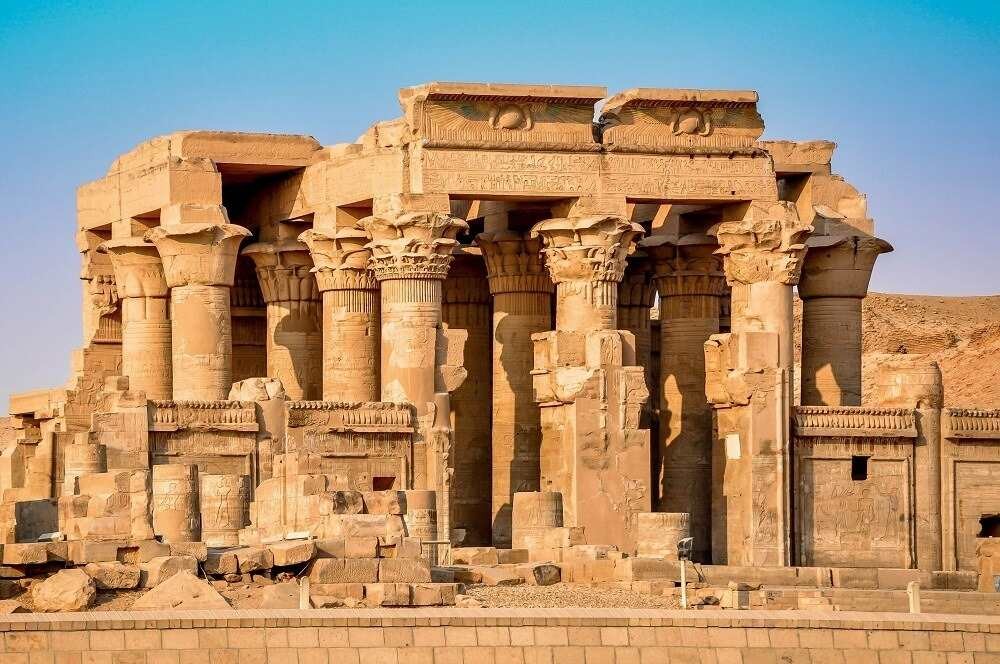
8. Ramesseum
Location: West Bank of Luxor
Era: New Kingdom (1279–1213 BCE)
Dedicated to: Ramses II
The Ramesseum is the temple of Ramses II, one of Egypt’s most potent and long-reigning pharaohs. Though much of the temple has been lost to time, the remnants still showcase Ramses II’s ambition and the grandeur of his reign. The colossal seated statue of the pharaoh, once over 17 meters tall, now lies in ruins, yet it remains an iconic symbol of his power.
The temple is adorned with scenes of Ramses’ military victories, like the famous Battle of Kadesh, and religious rituals dedicated to the gods.
Why Visit?
For those interested in Ramses II and his legacy, the Ramesseum is an evocative site that combines history with a sense of grandeur and decline.
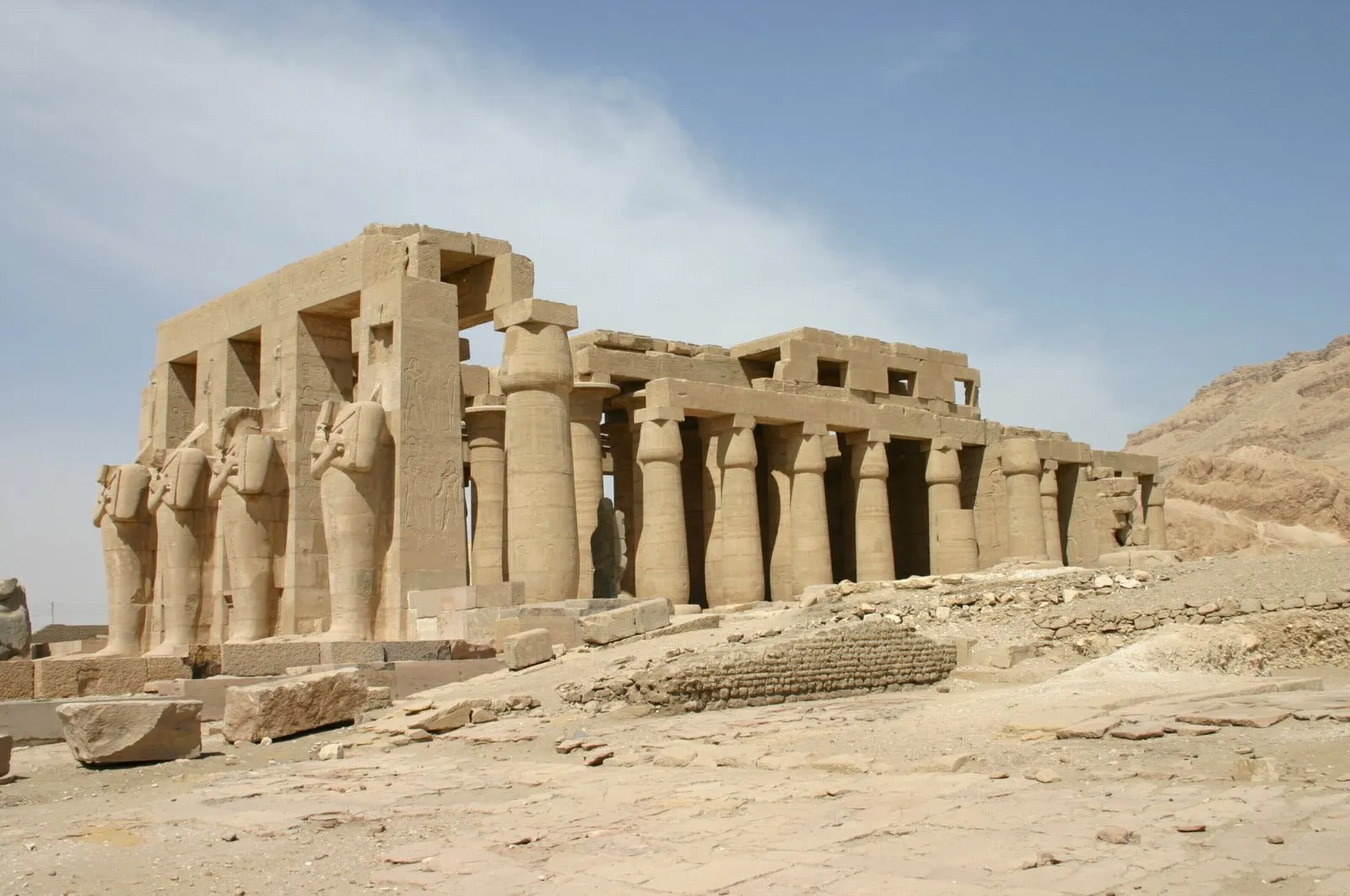
9. Medinet Habu
Location: Luxor, West Bank
Era: New Kingdom
Dedicated to: Ramses III
Medinet Habu is one of the most visually stunning and well-preserved temples on the West Bank of Luxor. It served as Ramses III’s mortuary temple, and its massive walls and intricately carved reliefs depict scenes of battles, victories, and religious ceremonies. The temple’s grand scale and well-preserved decorations make it a must-see. The temple is also notable for depicting Ramses III’s triumph over the Sea Peoples, a mysterious group who threatened Egypt’s borders during his reign.
Why Visit?
Medinet Habu’s detailed reliefs, colorful wall paintings, and tranquil setting make it one of Luxor’s hidden gems. It’s often less crowded than other temples, allowing for a more peaceful visit.
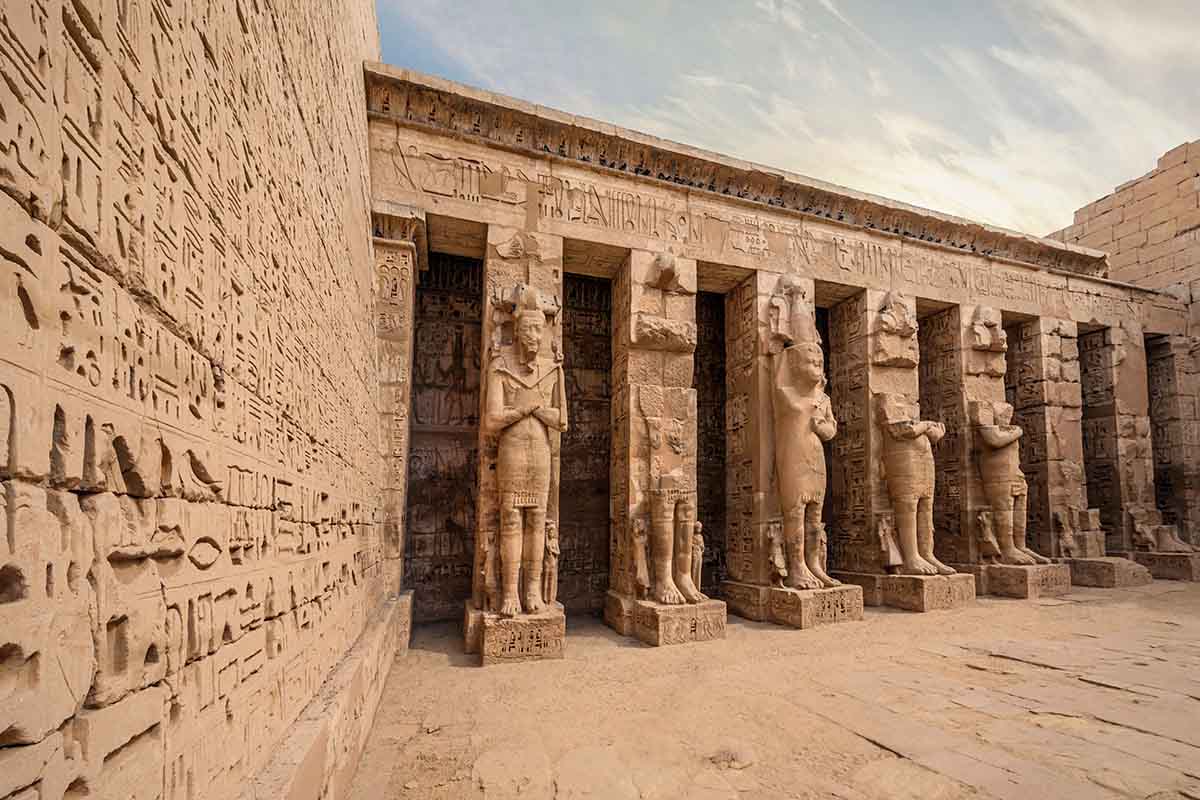
10. Temple of Seti I (Abydos)
Location: Abydos, Upper Egypt
Era: New Kingdom (1290–1279 BCE)
Dedicated to Osiris, Seti I, and other gods
The Temple of Seti I in Abydos is one of Egypt’s most essential and beautiful temples. Dedicated to the god Osiris and Seti I, this temple holds significant religious value, as Abydos was believed to be the burial place of Osiris, god of the underworld. The temple’s reliefs are among the finest in Egypt, with intricate details and vivid colors that have survived thousands of years.
One of the temple’s unique features is the Abydos King List, a chronological list of seventy-six Egyptian kings. This list provides historians with invaluable insights into ancient Egypt’s royal lineage.
Why Visit?
Abydos offers a spiritual and historical journey, with remarkable art and a connection to ancient Egypt’s most sacred beliefs about life, death, and the afterlife.
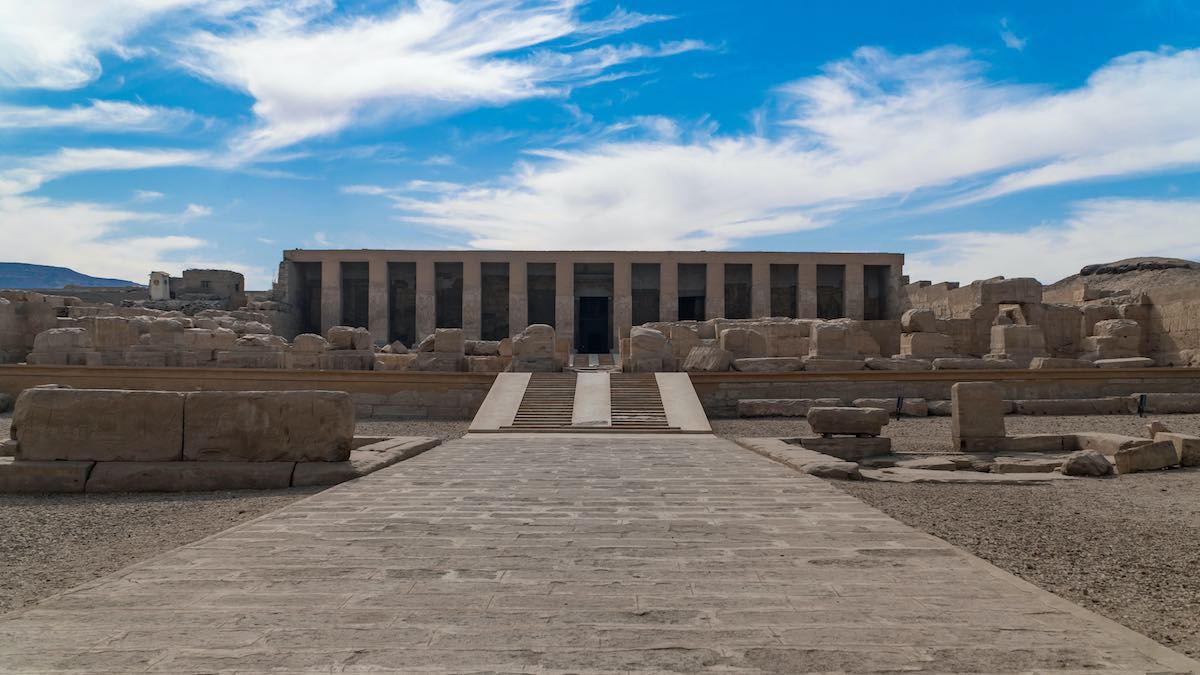
11. Dendera Temple Complex
Location: Qena, near Luxor
Era: Ptolemaic Period
Dedicated to: Hathor
The Dendera Temple Complex is one of Egypt’s most beautifully preserved temple sites, known for its majestic Temple of Hathor. Hathor, the goddess of love and motherhood, was widely worshipped in Egypt, and her temple reflects the grace and elegance associated with her. The temple’s ceiling is famously adorned with astronomical scenes, including a detailed zodiac depiction.
The vivid colors on the ceilings, walls, and columns have been remarkably well preserved, giving visitors a sense of the temple’s original splendor.
Why Visit?
Dendera offers a unique glimpse into ancient Egypt’s religious life. With stunning carvings, vibrant artwork, and an emphasis on astrology, it’s an essential stop for those fascinated by ancient Egyptian cosmology and art.
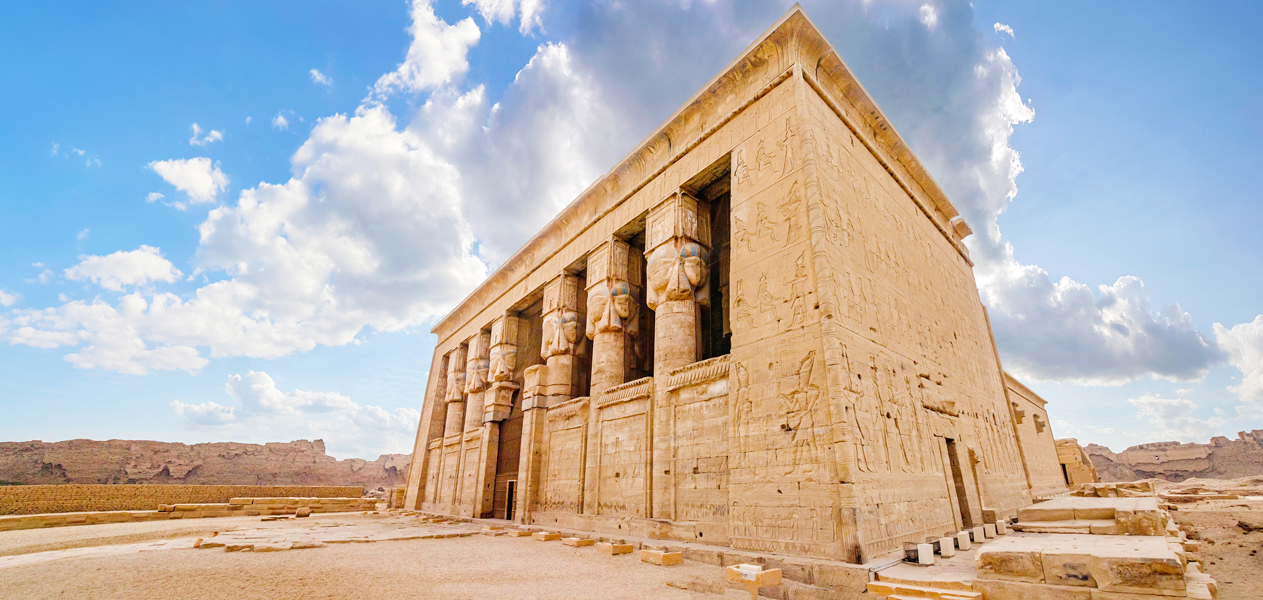
12. Temple of Esna
Location: Esna, near Luxor
Era: Ptolemaic to Roman Period
Dedicated to: Khnum
Though smaller than many of Egypt’s grand temples, the Temple of Esna is renowned for its incredibly detailed and well-preserved reliefs. Made for Khnum, the ram-headed god of creation, the temple’s interior is covered in intricate carvings depicting gods, pharaohs, and various mythological scenes. It also features an astronomical ceiling detailing constellations and the passage of time.
The site has undergone significant excavation and restoration, revealing more of its original grandeur and intricate stonework.
Why Visit?
Esna’s vibrant artwork and less tourist-heavy environment make it an excellent stop for those exploring Egypt’s hidden treasures. It’s a quiet gem where the intricacy of ancient craftsmanship can be appreciated up close.

13. Temple of Hathor (Serabit el-Khadim)
Location: Sinai Peninsula
Era: Middle Kingdom to New Kingdom
Dedicated to: Hathor
The Temple of Hathor at Serabit el-Khadim is unique in its location in the Sinai Peninsula, far from the more famous temples along the Nile. It was an essential site for the mining of turquoise, and the temple was built to honor Hathor, the goddess associated with mining and fertility. The rugged landscape of the Sinai, combined with the temple’s remote location, adds a sense of adventure to the experience of visiting it.
Although the temple is smaller and less well-known than others, it holds significant historical value, especially for those interested in Egypt’s mining operations and the spread of Egyptian influence into Sinai.
Why Visit?
Serabit el-Khadim offers a chance to explore a lesser-known yet fascinating aspect of ancient Egyptian history, combining archaeology with stunning desert landscapes.
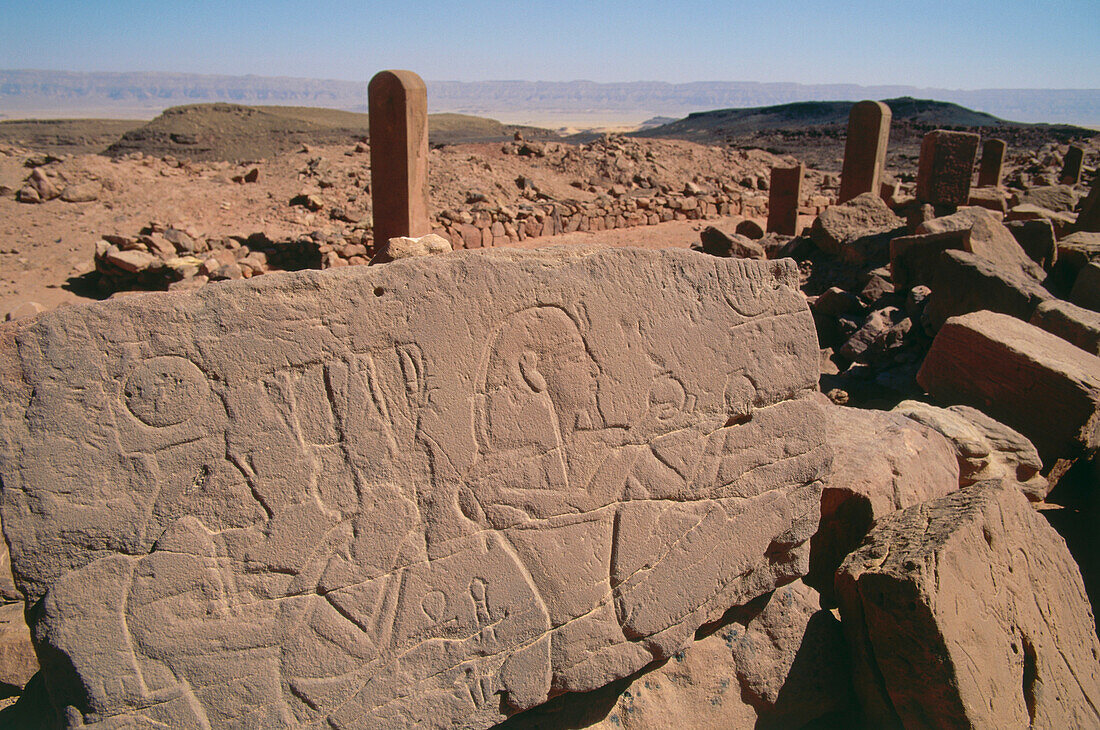
14. Temple of Montu (Medamud)
Location: Near Luxor
Era: Middle Kingdom to Roman Period
Dedicated to: Montu
The Temple of Montu, dedicated to the falcon-headed god of war, Montu, is located in Medamud, just north of Luxor. Though primarily in ruins today, this temple was once a significant religious site during the Middle Kingdom. Montu was the god of strength and warfare, and the temple was an essential center for ceremonies involving victory in battle and the honoring of warriors.
The ruins at Medamud offer a unique look at the Middle Kingdom’s architectural style and a glimpse into the martial aspects of Egyptian religion.
Why Visit?
For those interested in Egyptian religion’s military and warfare aspects, the Temple of Montu offers a less touristy, off-the-beaten-path experience. The site is ideal for history buffs looking for something beyond the significant temples.
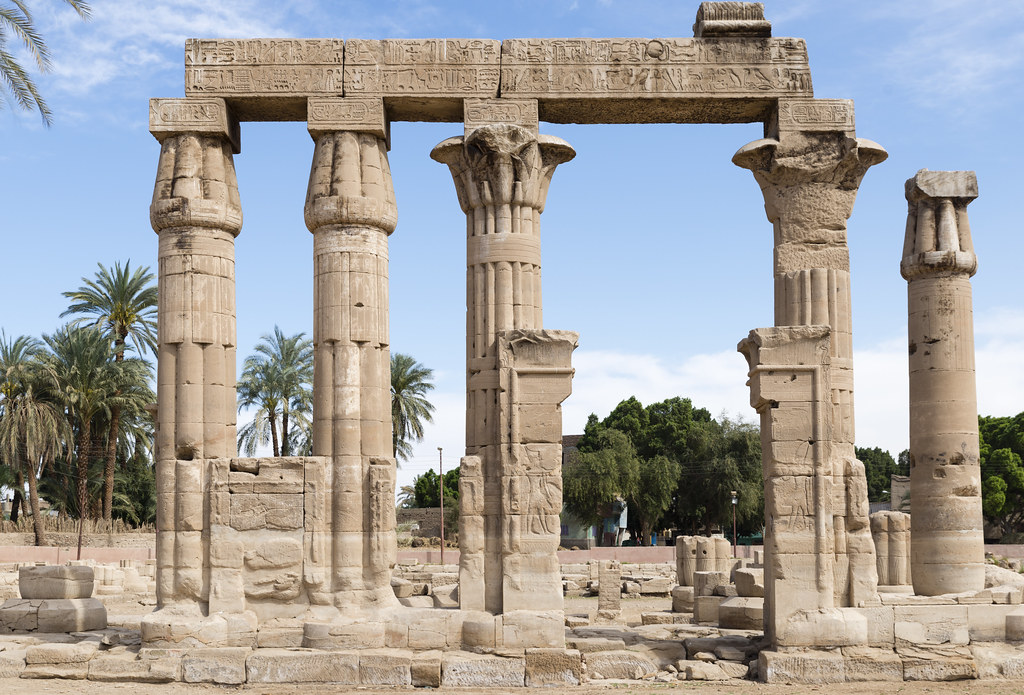
15. Temple of Hibis
Location: Kharga Oasis, Western Desert
Era: Late Period (6th century BCE)
Dedicated to: Amun
The Temple of Hibis, located in the Kharga Oasis of the Western Desert, is one of the few well-preserved temples from the Late Period of Egyptian history. Its remote desert location adds to its allure, providing a striking contrast to the temples along the Nile. Built during the Persian occupation of Egypt, the temple is dedicated to Amun and blends Egyptian and Persian architectural styles.
The temple walls are adorned with vivid reliefs depicting pharaohs offering gifts to the gods, and its peaceful setting in the oasis makes it a serene place to explore.
Why Visit?
The Temple of Hibis offers a unique experience of Egypt’s desert temples. Its isolation provides a quieter, more contemplative atmosphere, and its mix of Egyptian and Persian influences makes it historically significant.
